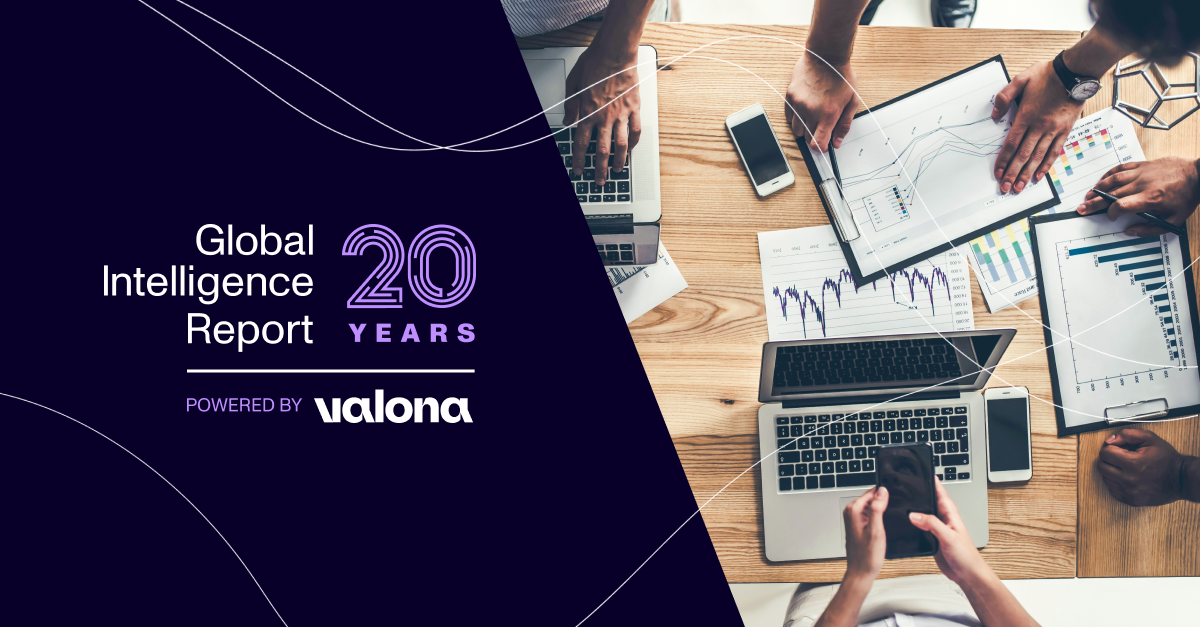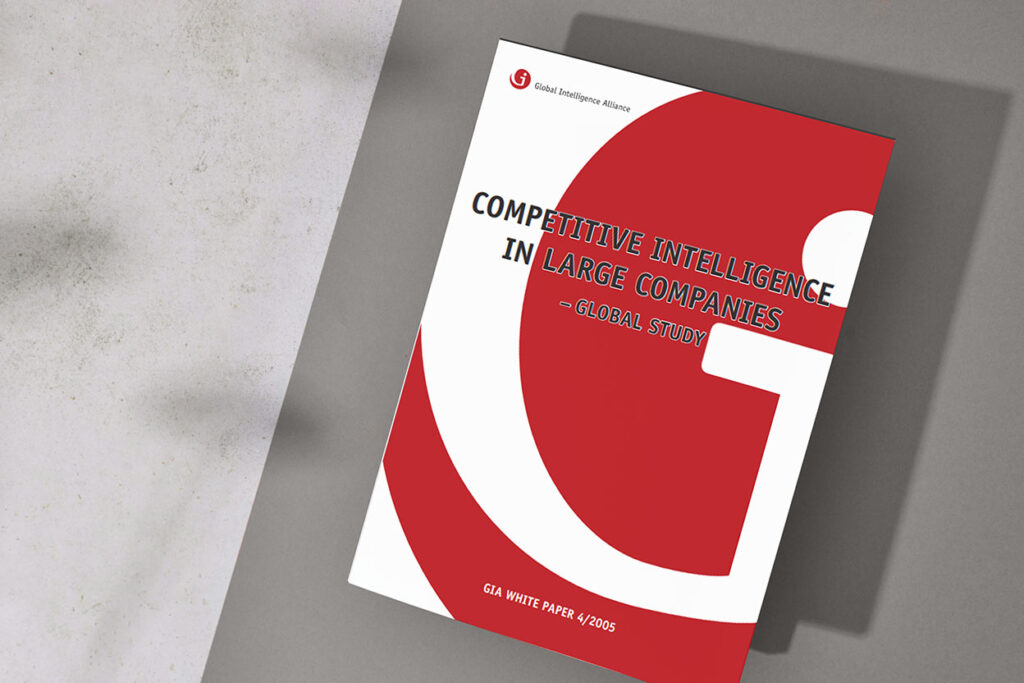
From Fax Machines to AI: Valona’s Global Intelligence Survey Turns 20
Twenty years ago, we launched what would become the longest-running benchmark study in competitive & market intelligence. Today, we're celebrating not just how far we've come, but what's on the horizon.
Where we started (and how far we’ve come)
When we started this journey in 2005, competitive intelligence meant:
- Manually clipping articles from trade publications
- Faxing (!) market reports to colleagues
- Having one person in the company who “knew about the competitors”
Fast forward to today:
- AI tools that can analyze 10,000 news articles in seconds
- Real-time market data from every corner of the globe
- Geopolitical events that reshape entire industries overnight
The tools have evolved beyond our wildest dreams. But here’s what hasn’t changed: the best organizations still have something the rest don’t. They see around corners. They move first. They know how to turn market uncertainty into golden opportunity.
The question that started it all—and still drives us today: What makes competitive intelligence actually work?

Image: Global Intelligence Report 2005
Why this milestone feels different
Here’s the thing about 20-year anniversaries: at some point you realize you’re not just collecting data — you’re documenting the evolution of an entire profession.
Over the past two decades, we’ve had front-row seats to some pretty exciting changes
- The shift from information scarcity to “wait, how do we process all of this?”
- The move from reactive reporting to predictive strategy
- The integration of AI and human insight
We’re currently at another big inflection point. AI capabilities are advancing by the day (or at least it feels that way). Geopolitical complexity is reshaping markets overnight. Remote work has changed how teams share intelligence.
Which brings us to this year’s big question: What does world-class intelligence look like when everything is changing at once?
What we’re exploring this year
Two paths, one big(ger) picture
For the first time ever, we’re creating separate paths for intelligence builders and intelligence users. Why? Because we realized these groups face very different challenges—and asking them the same questions wasn’t giving us the full story.
Intelligence builders are juggling data sources, proving ROI, and trying to keep up with AI developments. Intelligence users need clarity, speed, and confidence in their strategic decisions. Time to understand both sides properly.
The real story on AI adoption
Everyone’s talking about AI in intelligence, but we want to know what’s actually working. Not just “do you use AI?” but “how is it changing your day-to-day work?” and “what does successful human + AI collaboration actually look like?”
Because candidly, the most interesting insights come from practitioners who’ve moved beyond the hype to figure out what really works.
Does culture still eat strategy for breakfast?
We’re going deeper on something we’ve known for years: culture might be more important than tools — and yes, strategy too. But how do you measure that? How do you build it? How do you know if it’s actually creating competitive advantage?
This year, we’re introducing new ways to benchmark intelligence culture that go way beyond “do people share information?”
ROI that makes sense in 2025
Traditional ROI metrics don’t capture everything intelligence does for an organization. What about adaptive capacity? Strategic optionality? The ability to respond to disruption before competitors even see it coming?
We’re exploring how modern intelligence creates value in ways that spreadsheets can’t always capture.
Global intelligence perspectives
With participants in every time zone, we’re tracking how different regions and cultures approach the same challenges. Turns out there’s no universal playbook for intelligence — and that’s actually super interesting.
What’s at stake
This isn’t just about collecting data points. The patterns that emerge from this study will influence some big decisions:
- How organizations structure their intelligence functions
- Which skills intelligence professionals focus on developing
- How executives think about competitive advantage in an uncertain world
- What “getting intelligence right” looks like in 2026 and beyond
Put simply: the intelligence landscape of tomorrow is being shaped by the collective wisdom of practitioners today.
Your experience makes all the difference
Twenty years ago, we had a hunch that competitive intelligence was becoming more important. Turns out we were right—but the transformation blew past even our most optimistic predictions.
Today, we have another hypothesis: the organizations that figure out intelligence in the next few years will have a massive advantage for the decade ahead.
Whether you build intelligence capabilities or use them to make strategic decisions, you’re living through this transformation. The challenges you’re navigating, the solutions you’re discovering, the approaches that work (vs. the ones that definitely don’t work)—all of this shapes our collective understanding.
This is how entire professions evolve. And we all collectively benefit by getting better at turning information into competitive advantage.
Your turn to have your say
The intelligence study 20 years in the making continues below. We’d love to hear your perspective.
One last thing: we’re celebrating our 20th by giving away a complimentary Enterprise Intelligence Assessment (valued at $5-7,000) to one lucky participant. Think of it as our way of saying thanks for two decades worth of insights.




